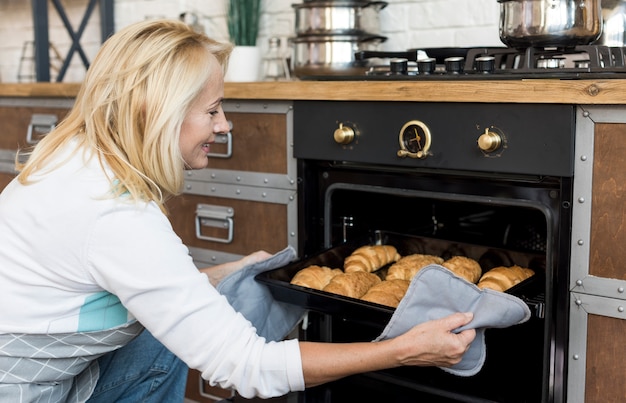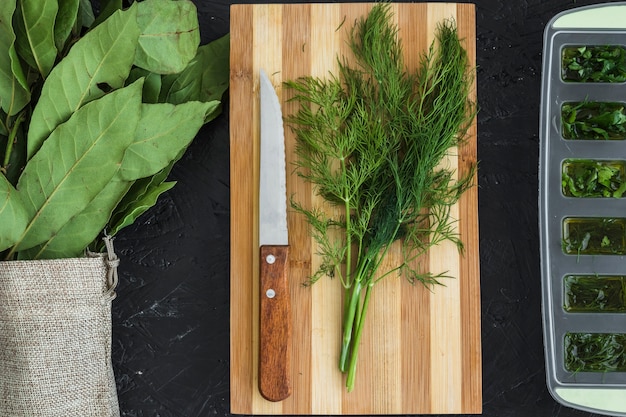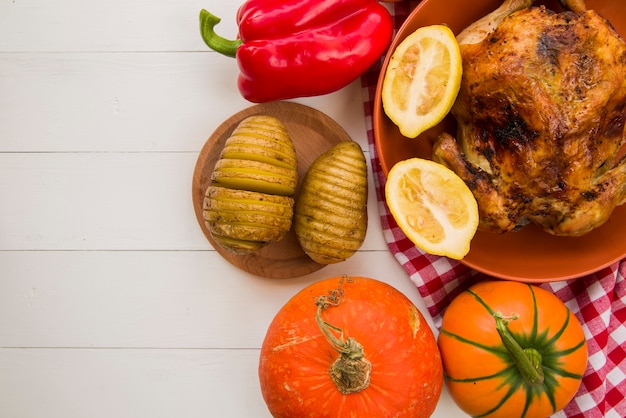As a seasoned cook, I've baked countless potatoes over the years. From simple baked potatoes to elaborate potato dishes, I've learned a thing or two about mastering the art of potato roasting. One question that always comes up, even amongst seasoned cooks, is: how long do you bake potatoes in the oven? It's a simple question, but the answer depends on a few factors, which I'll explore in this article. I'll share my insights, personal experiences, and tips for achieving perfectly roasted potatoes every time. Think fluffy insides, crispy exteriors, and a symphony of flavours that will have everyone asking for seconds!
(Part 1) The Basics: Getting Started

baking potatoes is a straightforward process, but a few key things make all the difference. It's like setting the stage for a delicious performance! Let's start with the basics, shall we?
choosing the right potato: The Foundation of Flavor
Not all potatoes are created equal when it comes to baking. You want a potato with a starchy texture that holds its shape well during baking. Imagine a potato that's willing to stand up to the heat and not crumble into a mushy mess! Some popular choices include:
- russet potatoes: These are my personal favourite for baking, with their high starch content and relatively low moisture. They produce a fluffy, light interior and a crispy skin. It's like having a cloud in your mouth with a satisfying crunch!
- yukon gold potatoes: These offer a beautiful golden colour and a slightly sweeter flavour compared to russet potatoes. They're a good choice for roasted potatoes with herbs, adding a touch of elegance to your dish.
- Red Bliss Potatoes: These are a good all-rounder, with a balance of starch and moisture. They produce a creamy texture and hold their shape well during baking. It's like the middle ground of the potato world, perfect for those who like things just right.
Avoid waxy potatoes like fingerling or new potatoes, as they tend to become mushy when baked. It's like trying to bake a marshmallow, and let's face it, nobody wants a mushy potato.
Preparing the Potatoes: Setting the Stage for Success
Here's my simple prepping process, a little like getting an actor ready for the spotlight:
- Wash and Scrub: Give your potatoes a good scrub to remove any dirt. I use a vegetable brush for this, ensuring my potatoes are sparkling clean and ready for the oven. If you're using a potato that has a lot of dirt, you might want to peel it before baking.
- Prick with a Fork: This helps release steam during baking and prevents the potatoes from exploding in your oven! I usually prick them with a fork a few times all over, making sure the steam has an escape route.
- Oil and Season: A light coating of olive oil and a sprinkle of salt and pepper are all you really need. Think of it as a little bit of makeup for the potato, highlighting its natural beauty. For a more complex flavour, you can also add herbs, spices, or even a drizzle of honey. It's like adding a dash of drama to your potato performance!
(Part 2) The Oven Factor: Setting the Stage

The oven you're using plays a crucial role in determining your baking time. It's like understanding the stage itself and how it affects the show.
Oven Temperature: The Golden Rule
The standard oven temperature for baking potatoes is 400°F (200°C). But, this is just a starting point. My experience has shown me that some ovens run hotter or cooler than others. Think of it like a backstage crew adjusting the lighting to get the perfect glow on the actors. The trick is to test your oven and adjust the temperature accordingly.
Preheat: A Crucial Step
Preheating your oven is essential. It ensures that the oven is at the right temperature when you place your potatoes inside, resulting in even cooking. I always preheat my oven for at least 15 minutes before putting the potatoes in. I find that preheating makes a huge difference in the final result. Think of it as getting the stage warmed up before the curtain rises!
(Part 3) Baking Time: The Key to Success

Now, here comes the tricky part: determining the baking time. It depends on a few factors, including the size of the potatoes, the oven temperature, and the desired texture. Think of it as finding the perfect tempo for the performance!
Size Matters: The Bigger, the Longer
The size of the potatoes is a key factor in determining the baking time. Smaller potatoes will bake faster than larger ones. I usually use a general rule of thumb:
- small potatoes (2 inches diameter): 45-60 minutes
- Medium Potatoes (3 inches diameter): 1 hour - 1 hour 15 minutes
- Large Potatoes (4 inches diameter): 1 hour 30 minutes - 2 hours
Don't Forget: The Texture Factor
The desired texture of the baked potato also plays a role. If you want a fluffy, tender interior, bake the potatoes until they are soft to the touch. However, if you prefer a crispy exterior, you might need to bake them for a little longer. It's all about achieving the desired effect, whether it's soft and yielding or crispy and crunchy.
The Fork Test: A Foolproof Method
The fork test is a reliable way to check if your potatoes are baked through. Insert a fork into the center of a potato. If it goes in easily and comes out clean, it's done. If it meets resistance, it needs more time in the oven. It's like checking if the actor is ready to deliver their lines with confidence!
(Part 4) Beyond the Basics: Enhancing Your Baking
Now that you have the basic knowledge, let's explore ways to elevate your baked potatoes to the next level, adding a touch of flair and finesse to your performance!
Wrap Them Up: Foil to the Rescue
Wrapping your potatoes in foil can create a more even cook and prevent them from drying out. I often wrap them in foil for the first part of the baking time, then remove the foil for the final 15-20 minutes to crisp up the skin. This technique gives you the best of both worlds: fluffy insides and a crispy exterior. It's a little trick I learned from my grandmother, and it works wonders. It's like giving the potato a cozy blanket to stay warm and then letting it bask in the spotlight for a final flourish.
Embrace the Herbs: Adding Flavor
Don't be afraid to experiment with herbs and spices to add flavour to your baked potatoes. Some of my favourites include rosemary, thyme, garlic powder, and paprika. You can also add a touch of sweetness with a drizzle of honey or maple syrup. It's like adding a layer of character and depth to your potato, making it truly unforgettable.
Go for a Sprinkle: Adding Texture
For an extra crispy exterior, sprinkle your potatoes with coarse salt or breadcrumbs before baking. The salt adds a salty crunch, while the breadcrumbs create a delightful crispy coating. I find this method particularly effective for baked potatoes that are served as a side dish. It's like giving the potato a little costume change, adding a touch of drama and texture.
(Part 5) The Perfect Pairings: Enjoying Your Baked Potatoes
Baked potatoes are incredibly versatile and can be enjoyed in many different ways. They are the ultimate blank canvas for culinary creativity! Here are some of my favourite pairings:
Classic Comfort: Butter and Sour Cream
This is the ultimate comfort food pairing. Simply split the baked potato, add a pat of butter, and dollop of sour cream, and you're good to go. It's simple but incredibly satisfying. I love adding a sprinkle of chives for a touch of freshness. It's like a warm hug on a cold day, simple yet deeply satisfying.
Hearty and Savoury: Chili and Cheese
For a hearty and savoury meal, try topping your baked potato with chili and cheese. I like to use a homemade chili recipe, but store-bought chili works just as well. I also like to add a sprinkle of shredded cheddar or Monterey Jack cheese. It's a perfect dish for a cold winter night, providing warmth and satisfaction.
Light and Fresh: Avocado and Salsa
For a lighter option, try topping your baked potato with mashed avocado and salsa. The avocado adds creaminess and healthy fats, while the salsa provides a refreshing touch. This combination is perfect for a summer evening, offering a light and vibrant flavour profile. I love to add a sprinkle of cilantro and a squeeze of lime juice to elevate the flavours. It's like a summer breeze in every bite!
(Part 6) Baking Time Chart: A Quick Reference
To help you plan your baking time, here's a quick reference chart:
| Size (Diameter) | Baking Time (400°F/200°C) |
|---|---|
| Small (2 inches) | 45-60 minutes |
| Medium (3 inches) | 1 hour - 1 hour 15 minutes |
| Large (4 inches) | 1 hour 30 minutes - 2 hours |
Remember that these are just estimates, and you might need to adjust the baking time depending on your oven and the desired texture. Always check the potatoes with a fork to ensure they are cooked through. It's like ensuring the actors are ready to deliver their final performance with confidence!
(Part 7) The Art of Baking: My Personal Journey
Baking potatoes is more than just a culinary task for me; it's a journey of discovery and experimentation. It's about understanding the nuances of different potatoes, the quirks of my oven, and the perfect combination of flavours. Over the years, I've learned a few things:
The Power of Experience
The more potatoes you bake, the better you'll become at gauging baking times. I've learned to recognize the telltale signs of a perfectly baked potato: the skin is slightly wrinkled and a gentle squeeze reveals a soft, yielding interior. It's a feeling you get with practice. It's like the seasoned actor who knows the script by heart and can deliver a performance flawlessly.
The Importance of Observation
Pay attention to your oven. Every oven is different, and understanding its quirks is crucial. Observe how long it takes for your oven to reach the desired temperature, how evenly it heats, and how it affects the baking time. I keep a little notebook where I record my observations and adjustments. It's like learning the stage and its nuances to make sure the performance runs smoothly.
The Joy of Experimentation
Don't be afraid to experiment with different flavours and combinations. Baked potatoes are a blank canvas, and there are endless possibilities. I've tried everything from sweet and spicy toppings to cheesy and creamy concoctions. Experimenting is how I discover new favourites. It's like a director trying out different scenes and costumes to find the perfect combination for a compelling performance.
(Part 8) FAQs: Answers to Your Burning Questions
Here are some frequently asked questions about baking potatoes:
1. Can I bake potatoes in a microwave?
While you can technically bake potatoes in a microwave, it won't give you the same results as oven baking. Microwave baking tends to result in a softer, mushy texture. If you're looking for a crispy exterior and fluffy interior, stick to oven baking. Think of it like using a different kind of stage to perform on, it might be faster, but it won't have the same impact.
2. How do I know if a baked potato is done?
The best way to check is with the fork test. Insert a fork into the center of the potato. If it goes in easily and comes out clean, it's done. If it meets resistance, it needs more time in the oven. It's like checking if the actor is ready to deliver their lines with confidence!
3. What if my potatoes are too big to fit in the oven?
If you're working with extra-large potatoes, you can cut them in half or even quarters before baking. This will help them cook more evenly and reduce the baking time. Just be sure to wrap the cut sides in foil to prevent them from drying out. It's like finding a way to adjust the stage to accommodate a larger cast!
4. What's the best way to store leftover baked potatoes?
Leftover baked potatoes can be stored in the refrigerator for up to 3-4 days. Wrap them tightly in plastic wrap or foil to prevent them from drying out. You can reheat them in the oven, microwave, or even in a toaster oven. It's like preserving the performance for another day!
5. Can I bake sweet potatoes the same way as regular potatoes?
Yes, you can bake sweet potatoes using the same methods as regular potatoes. However, sweet potatoes tend to have a shorter baking time. Check the potatoes with a fork to ensure they are cooked through. Think of it as a different kind of performance, but with the same essential techniques.
I hope this article has given you a deeper understanding of how to bake potatoes in the oven. Remember, it's a journey of discovery and experimentation. Don't be afraid to try new things and find what works best for you. Happy baking!
Everyone is watching

Prime Rib Roast Cooking Time Chart: Per Pound Guide
Cooking TipsPrime rib roast. Just the name conjures images of lavish dinners, crackling fires, and hearty laughter. It’s ...

How Long to Bake Potatoes in the Oven (Perfect Every Time)
Cooking TipsBaked potatoes are a staple in my kitchen. They're incredibly versatile, delicious, and surprisingly easy to m...

Perfect Rice Every Time: The Ultimate Guide to Cooking Rice
Cooking TipsAs a self-proclaimed foodie, I've always been a bit obsessed with rice. It's the foundation of countless cuisi...

The Ultimate Guide to Cooking Asparagus: Tips, Techniques, and Recipes
Cooking TipsAsparagus. The mere mention of this spring delicacy conjures up images of vibrant green spears, crisp and burs...

Ultimate Guide to Cooking the Perfect Thanksgiving Turkey
Cooking TipsThanksgiving. Just the word conjures up images of overflowing tables laden with delicious food, the scent of r...
